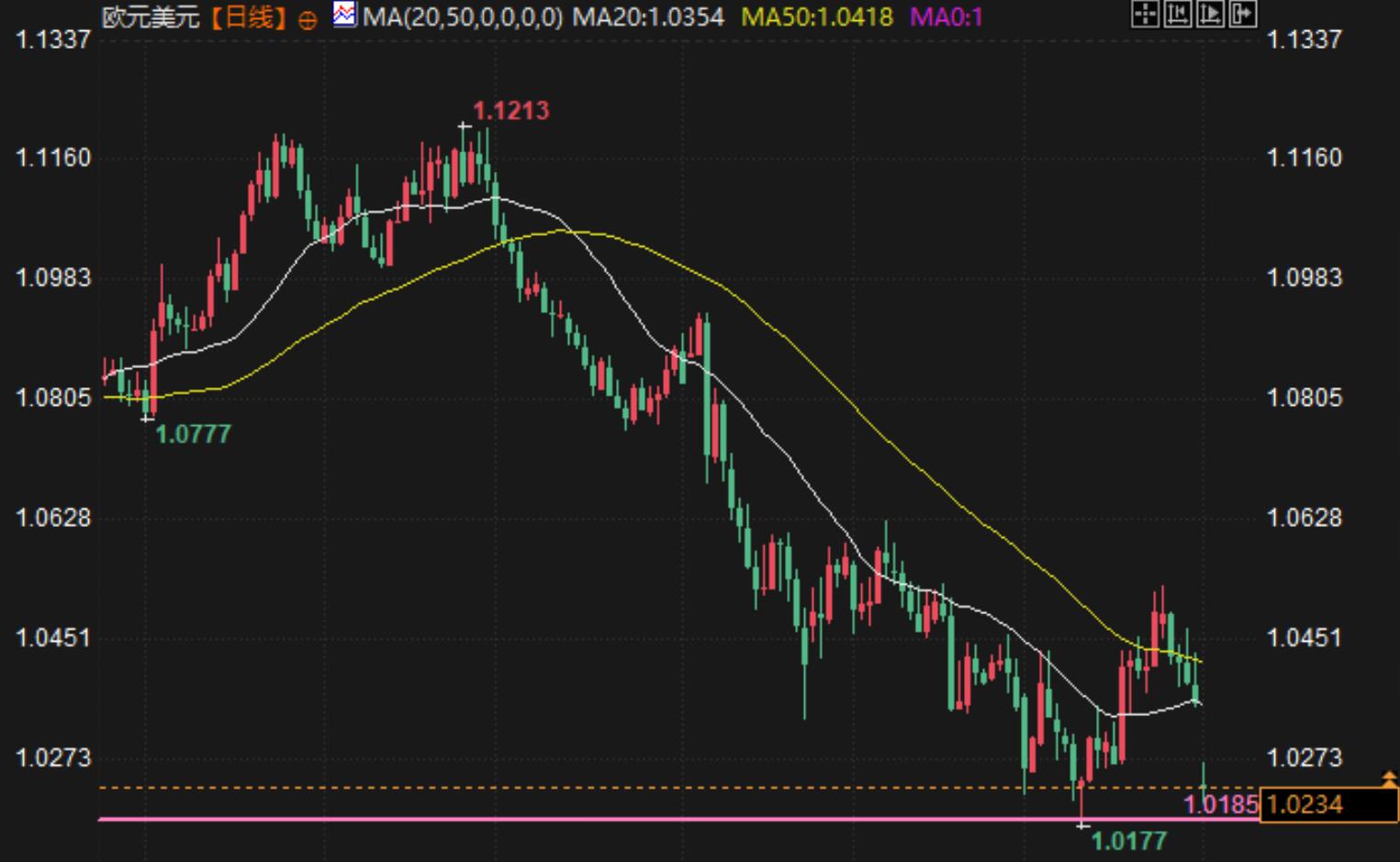Forex trading analysis: EUR/USD plummets by 1%! What will the market trend do next?
On Monday (February 3rd), the euro fell more than 1% against the US dollar during the day, mainly due to the impact of US President Trump's tariff remarks, and the market's risk aversion sentiment has risen. The US dollar is sought after as a safe haven asset. At the same time, weak economic data in the eurozone and expectations of loose monetary policy from the European Central Bank (ECB) have intensified selling pressure on the euro.
Market background and market overview
At the beginning of this week, the euro fell sharply against the US dollar, mainly due to US President Trump's repeated mention of the possibility of imposing tariffs on the European Union. Trump announced over the weekend the imposition of tariffs on countries such as Canada and Mexico, and warned that the European Union may also be the next target. Although he did not provide specific details, this statement has raised concerns in the market about the worsening global trade situation, and investors have turned to safe haven assets such as the US dollar, putting pressure on the euro.
In addition, the weak performance of economic data in the eurozone has exacerbated the decline of the euro. The initial GDP of the Eurozone for the fourth quarter of 2024 shows that economic growth has stagnated, and the German economy has shrunk, further dragging down the performance of the entire Eurozone. At the same time, the European Central Bank's expectation of loose monetary policy has also reduced the attractiveness of the euro.
Fundamental analysis: dual suppression of tariff rhetoric and economic data
Trump's tariff remarks were undoubtedly the focus of market attention at the beginning of this week. He made it clear in his weekend speech that tariffs will be imposed on the EU and accused the EU of taking advantage of trade. This statement not only intensified market concerns about the global trade situation, but also directly suppressed market sentiment towards the euro. Investors are concerned that if the United States imposes tariffs on the European Union, exports from the eurozone will be severely impacted, further dragging down the already weak economy.
From the perspective of economic data, the performance of the eurozone is also not optimistic. The initial value of Eurozone GDP for the fourth quarter of 2024 shows that economic growth has stagnated, significantly slowing down from the 0.4% growth rate in the third quarter. Among them, the contraction of the German economy is particularly noteworthy, with a year-on-year decline of 0.2% in German GDP in the fourth quarter of 2024, becoming the main drag on economic growth in the eurozone. This data further exacerbates market concerns about the economic outlook of the eurozone.
At the same time, the monetary policy of the European Central Bank has also put pressure on the euro. Last Thursday, the European Central Bank announced a 25 basis point reduction in deposit rates to 2.75% and hinted at the possibility of further easing monetary policy in the future. The market generally expects the European Central Bank to implement three interest rate cuts before this summer to address inflationary pressures and the risk of economic slowdown. This loose expectation further weakened the attractiveness of the euro.
Technical analysis: EUR/USD falls below key support
From a technical perspective, the downward trend of the euro against the US dollar is evident. Last week, the exchange rate quickly fell back after a brief rebound to 1.0533, and market participants took advantage of this opportunity to increase their short positions. At the beginning of this week, the exchange rate further declined, falling below the 20 day and 50 day moving averages (EMAs) of the index, located around 1.0378 and 1.0440 respectively, indicating a strong bearish signal.
In addition, the relative strength index (RSI) on the 14th has fallen below 40, indicating a strong bearish sentiment in the market. In the short term, the low points of 1.0177 and the integer level of 1.0100 on January 13th will become key support levels. If the exchange rate falls below these levels, it may further explore to lower levels. On the other hand, the psychological resistance level of 1.0500 will become the main obstacle for euro bulls.

Future Trends and Prospects
Looking ahead, the trend of the euro against the US dollar will mainly depend on the following factors: firstly, whether Trump's tariff remarks are translated into actual actions, and the EU's response to this. If trade tensions escalate further, the euro may continue to be under pressure. Secondly, the economic data performance of the eurozone will also have a significant impact on the exchange rate. If economic data continues to be weak, market expectations for further easing by the European Central Bank will rise, thereby suppressing the euro.
In the short term, the euro against the US dollar may continue to fluctuate around 1.0200, but if it falls below the key support level of 1.0177, the exchange rate may further drop to 1.0100. On the other hand, if market sentiment improves or US economic data falls short of expectations, the euro may experience a brief rebound, but the resistance level of 1.0500 will limit its upward potential.
Overall, in the current market environment, the trend of the euro against the US dollar still tends to decline, and investors need to closely monitor the trade situation and changes in economic data in the eurozone to seize market opportunities.
Tips:This page came from Internet, which is not standing for FXCUE opinions of this website.
Statement:Contact us if the content violates the law or your rights
